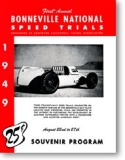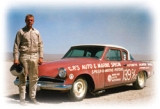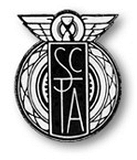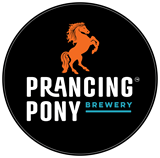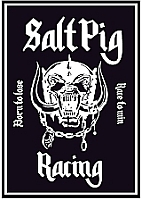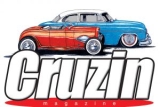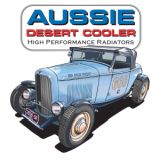Bonneville History
A Fast Run Down On The Salt Flats
by Clifton Wheeler - reprinted from the official Program of the SCTA August 14-21 1998 |
 |
 |
 |
 |
From the beginning even before the wheel was invented, it was meant to be the supreme land formation where land speeds were to be tested. It was as though some preplanned geological destiny had been laid down in the Great Salt Desert for the sole benefit of land speed racers.
Millions and millions of years: ago, geologists tell us that the entire Western United States lay under a huge sea. (They discuss such things in geologic timing.) It was called the Miocene period, internal pressures began raising the sea floor until it rose several thousand feet above the sea level. The pressures not being equal everywhere, caused mountains and valleys, cracked and faulted land forms. As this tremendous upheaval continued, it became exposed to weathering and erosion.
In the Utah region a special situation came about because of this natural occurrence. The upheaval of the land formed a closed circle of mountains surrounding the western area of Utah. As the eons of time continued, glaciers from the Ice Age melted. The glacier water combined with the yearly storm run off created a huge lake within the great basin between the mountains, creating a lake as large as Lake Michigan. After a while the water level reached its crescendo and broke through in the North West running out at the Snake River. The lake became heavy with soluble minerals, weathering continued to carve away at the salt filled mountains.
Imagine the distance between Salt Lake City and Wendover, some 120 miles apart and South 300 miles all covered with 1000 feet of water. Brachish water. The same as the water in the Great Salt Lake.
A look at the mountains surrounding the Salt Flats, one can see the ancient shore lines at different elevations as the lake evaporated.
Note: There air three distinct shore lines. The first is called the Bonneville Terrace, named after the lake itself. (Bonneville Lake.) The second: Provo Terrace and the lowest the Stansbury Terrace. The last is what we stand on today. (The Bonneville Salt Flats.) This geological phenomena left the western United States with some of the most striking and beautiful land formations, in the world. To name a few: Zion, The Grand Canyon, Canyon Country, Bryce Canyon, The Painted Desert, The Rocky Mountains. The spectacle goes on and on.
The Uniled States was a new country in a virgin land and soon men came west to explore the uncharted terrain. As pioneers pushed west the Salt Flats became a dreaded obstacle to cross. Wagon trains would bog down in the mud. The long trek across the Salt was chancy, water was unavailable as was same for food. The long empty space, the glare of the white blinding surface and the desperate situation for provisions would drive man and beast crazy. Animals died, men would run off into the horizon screaming.
It is said that Jedediah Smith was the first white mall to cross the Salt Flats in 1827 on his return east from California. Encountering great hardships, loss of animals and not enough water, they barely made it to the other side alive.
1841--The first wagons to California under Colonel Bartleson crossed the Salt enduring the same hardships. Colonel John C. Fremont with Kit Carson as his guide crossed the vast open space in 1845 while exploring the west for the Federal Government. But for some unknown reason, The Salt Flats was named after Captain Benjamin L. E. Bonneville a French born officer in the U.S. Army. He was sent to explore the Rocky Mountain region 1832 - 1836. History tells us he was a failure at everything he did and it is still not known whether or not he ever stepped foot onthe Salt. He was made famous by Washington Irving in a story about his adventures west, which some say were very much exaggerated.
As the turn of the Century came about the Salt Flats became an engineers challenge and a mining bonanza. Western Pacific Railroad desiring a more direct route decided to cross the Salt Flats. Overcoming the obstacles of mud and salt, they opened the tracks in 1907. Steam Engines crossing the long water-less salt, had to stop for water, making Wendover an important railroad town. As a dot on the map Wendover became world renowned and in 1914 the first coast-to-coast telephone line was connected near the Nevada border. Bell once again spoke to Watson, but he could not, say "Come here, Watson." He was in San Francisco and Bell in New York
Shortly after, the pressure of the presence of the automobile was Forcing highways all over the U.S. and what is now Highway 40 was constructed across the Salt. But it was Ab Jenkins who was to become the most active promoter of land speed racing on the Salt. He was a renowned racing enthusiast. He had records for cross country racing, hill climbing in cars, motorcycle records and top speed endurance records.
He once raced a train from Salt Lake City to Wendover in a car and won. In 1932, he pulled the fenders and running boards off a Pierce Arrow 12 and headed for the Salt Flats. They set up a 10-mile circle track with iron stakes and oil lamps for night driving. He told the Pierce Arrow Company he was going to cover 2400 miles in 24 hours, but instead he rolled up 2710 miles in 24 hours. However the feat was not recognized as a record by A.A.A. In 1934 a new record of 127.229 M.P.H. was accepted by the A.A.A. An enduring 24-hour record race. He had movie films of the record breaking run, so he took them to Daytona Beach to convince Campbell to run the famous Bluebird on the Salt.
Jenkins films, and his perseverance, finally convinced the British to his way of thinking and in 1935, Campbell became the first man to exceed 300 miles per hour in a wheel driven car on the Salt.
Ab Jenkins went on to break even more records with a special built Pierce Arrow.
We still read in the record books of the many endurance runs of 24, 36 and 48 hours. Speed records set his famous Mormon Meteor. Records that most racers agree will never be broken. It's not on record, but it is rumored that when Ab Jenkins removed his shirt he had a big "S" on his chest S for Superman. He truly was a motorsports racing giant.
It seems that the Salt had a duality running side by side with the desire of land speed racers. That duality was mining for potash, a product used in agriculture that could be refined from the salt minerals. Minerals that had been laid down over the cons of lime in the ancient lake bed. A seemingly never ending source and free for the taking
Every year for the last sixty years, racers came to break speed records. Silently and unnoticed the potash mining slowly depleted the salt. Even in the thirties when Campbell, Eyston and Cobb ran their huge machines, the course, down track to the east, was interrupted by mining dikes.
Soon it was realized that the Ronneville Salt Flats was the only place in the world with enough room to conduct speed attempts of 300 miles per hour and over.
In 1938, Capt. George Eyston and John Cobb came to Bonneville to break the land speed record. Eyston with his 71/2 ton Thunderbolt and Cobb with his much smaller aluminum streamliner a sporting 1200 horse-power airplane engine, dueled almost daily.
Eyston clocked 347 miles per hour. Then Cobb broke Eyston's record with a blazing 350 miles per hour. A few days later Eyston regained the record and upped the speed to 367 miles per hour. Eyston attempted to better the record later that week, but a wheel skirt came loose. The car skidded to a stop as 6000 people looked on in amazement. Meanwhile, back in the Los Angeles area,the Southern California Timing Association was in its infancy. Hopped up Model Tee's and Model A's thundered across Muroc, El Mirage and Harper dry lakes. They had their own ideas about land speed racing, which included production automobile engines, souped up with all the after market stuff that came down the pike. If it wasn't available they would hack it out themselves. These guys were doing it on nickels and dimes. They didn't have the source of finances that the British millionaires had, but they had the desire and the know how of going fast.
Car racing came to a halt during World War Two as gasoline and tires were rationed and became impossible to buy. The Air Force took control of Muroc becoming Fdwards Air Force base "without Hot Rods." The war ended in 1945 and the Gl's came home with a need for speed and a gleam in their eye for lend speed racing.
The Ford flathead became the popular engine to hop-up and the word Hot Rod soon was in everyone's vocabulary when speeding roadsters and fast cars were mentioned.
The Dry Lakes once again became the center of interest in California For land speed trials. More clubs joined the S.C.T.A. to compete for records and points. Few ever thought that a hot rod would break the all out land speed record, but in the minds of some, that challenge lurked.
1947: John Cobb brought his Mobile Oil sponsored Railston back to Bonneville for another try at the land speed record. It would only seem natural that some Hot Rodders would show up to view the attempt. It was also during the same week the famous Novi would try for an endurance record with Marv Jenkins, son of Abe, at the wheel, trading rides with Bud Winfield. Cobb powered the sleek Railston to a 403 mile per hour one way run becoming the first man to go over 400 miles per hour. The official two way record was to remain at 394.2 until 1964.
During this same week at Bonneville, Kong Jackson, Chuck Abbott, a few guys from La Canada and some bikers discussed the possibility or the S.C.TA. using the Salt Flats to conduct S.C.T.A. time trials. At this particular time the dry lakes had taken a pounding and were getting too rough to have safe runs on. The idea bccame a reality when a team of S.C.TA. members ventured to Salt Lake City to seek the use of Bonneville Salt Flats for S.C.T.A. speed trials. The results or that meeting are in 1949. The annual S.C.T.A. speed week land speed trials had started.
1964: The Americans recaptured the land speed record from the British in probably one of the most memorable contests ever staged by land speed racers.
Tom Green, Art Afrons and Craig Breedlove seemingly dueled daily. One capturing the record, then the other. However, many thought the jet cars were out of contention because they were not wheel driven when the Summers Brothers Golden Rod with four Chrysler Hemi engines powered to a new wheel driven and speed record of 409 miles per hour.
Even though they broke Cobbs record, they were overwhelmed by the limelight of the faster jet cars. Surnmers Brothers record held fast for 25 years. Then Al Teague with a single engine streamliner, powered #76 to a new wheel driven record of almost 410 miles per hour. An extraordinary feat for a classic American Hot Redder.
1970: The rocket powered car of Gary Gabelich, named the Blue Flame, upped the record to 622 miles per hour. The jet and rocket cars were going so fast that everyone in the Media forgot about the hard salt pounding wheel driven cars.
The controversy of jet cars versus wheel driven cars goes on and on. Should jet and Rocket cars be recognized as land speed record holders? Well, they're here to stay even though they are low flying, wingless airplanes or missiles. They're glamorous and most impressive, and they have now gone the speed of sound, but the wheel driven cars are the one's that deserve true recognition. They are the heart and soul of Bonneville racing, from the beginning it was always wheel driven cars.
It has been 50 years of racing on The Bonneville Salt Flats for the S.C.TA. The mining company now has an engineering plan to return salt to the race course. There is now hope that there may be 50 more years of racing at the Meca of land speed time trials "The Bonneville Salt Flats".
|
|
Learn More ...
- A brief History of the Dry Lakes Racers Australia - The first Ten Years
- Photo Gallery
- Friends of DLRA
Support the DLRA
- Promote your business by advertizing in the DLRA Newsletter
- Sponsors Information


